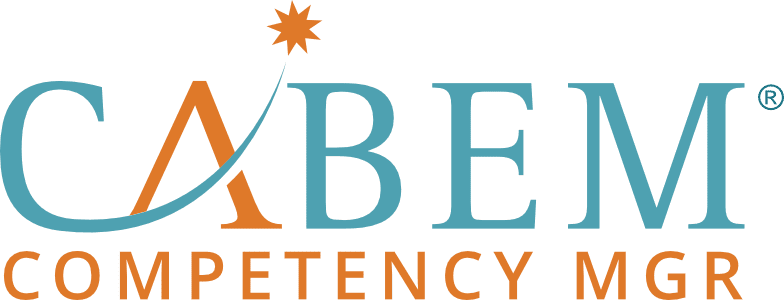A Deep Dive into Mitigating the Shelfware Challenge
In the landscape of technology and business, organizations are constantly seeking ways to optimize operations, improve productivity, and enhance their workforce’s competencies as well as competency management. As a result, investing in software solutions has become a prevalent practice. However, a common challenge arises from the underutilization of these software tools, a phenomenon often referred to as “shelfware.” This is a term used to describe software that has been purchased and installed within an organization but is not effectively utilized or adopted by its intended users. Essentially, the software remains “on the shelf,” not actively contributing to the organization’s operations or achieving the intended goals. This underutilization can result from various factors such as inadequate training, resistance to change, lack of awareness, or misalignment with organizational objectives.
Some organizations put off the transition to a Competency Management platform because they overestimate the level of effort required to get started. So they continue to burn resource hours on inefficient spreadsheet systems for years on end. At CABEM, we understand you’re busy—too busy for this to turn into a big project. And while it’s going to take a few steps to get up and running, we’ll go out of our way to make it as easy as possible for you. In this blog, we will delve into the concept of shelfware, its profound impact on competency management within organizations, and ways to mitigate this challenge.
The Costly Conundrum
The presence of shelfware within an organization poses a significant financial burden. When software is purchased but not effectively used, the organization essentially squanders the investment made in acquiring the software licenses. These unutilized licenses represent a sunk cost that could have been allocated elsewhere to benefit the organization. Moreover, ongoing maintenance fees for the unused software continue to accumulate, further draining financial resources. The financial impact of shelfware isn’t limited to the initial investment; it extends to the lost opportunity costs associated with not utilizing the software to its full potential.
Impact on Competency Management
Competency management involves identifying, developing, and tracking the skills and knowledge of employees to ensure they align with the organization’s objectives and requirements. Software solutions are often acquired to aid in competency management by facilitating learning, skill development, and performance tracking. However, when these tools become shelfware, they fail to support these critical aspects of competency management.
- Stagnant Skill Development: Shelfware prevents employees from engaging with the learning resources and tools designed to enhance their skills. This stagnation in skill development can hinder employee growth and adversely impact their ability to contribute effectively to the organization.
- Inefficient Performance Tracking: Many software solutions meant for competency management offer features for performance tracking and evaluation. When these features go unused, organizations miss out on valuable insights into employee performance, hindering the identification of skill gaps and opportunities for improvement.
- Reduced Employee Engagement: Employees often view unused software as a waste of resources, leading to a decline in their engagement and morale. The presence of shelfware can create a negative perception of the organization’s commitment to employee development and may erode trust in leadership.
Mitigating the Shelfware Challenge
Mitigating the challenge of shelfware, where software is underused or not used at all despite being purchased, is essential for organizations to derive maximum value from their software investments. Implementing the strategies outlined below can help in effectively addressing this issue and optimizing software usage within the organization:
- Thorough Needs Assessment: Before acquiring any software, conduct a comprehensive needs assessment within the organization. This involves engaging with relevant stakeholders to understand their requirements, challenges, and expectations. Ensure that the chosen software aligns with the organizational goals and objectives. By doing so, the software is more likely to be effectively utilized since it addresses specific organizational needs.
- Invest in Training and Change Management: Allocate resources for comprehensive training and change management initiatives. Training programs should be tailored to the software being implemented, ensuring that employees are proficient in using the software’s features and functionalities. Change management efforts should focus on building awareness, addressing concerns, and promoting a positive attitude towards adopting the new software. A well-trained workforce is more likely to embrace the software and utilize it to its full potential.
- Regular Evaluation and Optimization: Implement a system for continuous evaluation of software usage. Regularly monitor and analyze how the software is being utilized across various departments and teams. Establish mechanisms to collect feedback from users regarding their experiences, challenges, and suggestions for improvement. Actively engage with users to understand their needs and pain points related to the software. Use this feedback to optimize software usage, make necessary adjustments, and align the software with evolving organizational requirements.
- User Involvement and Feedback Loop: Involve end-users throughout the software implementation process. Seek their input during the selection phase to ensure the chosen software meets their requirements. Establish a feedback loop where users can provide input, report issues, and suggest improvements. Encourage an open dialogue between users and IT teams to address concerns and iterate on software usage to enhance its effectiveness.
- Flexible Licensing and Scalability: Opt for software licensing models that allow flexibility in usage and scalability. Ensure that the software license structure aligns with the organization’s changing needs. This flexibility enables the organization to adapt the usage of the software to its evolving requirements without incurring unnecessary costs or wastage of resources.
- Regular Vendor Engagement: Maintain an ongoing relationship with software vendors. Engage with them regularly to discuss software updates, new features, and best practices for usage. Leverage vendor expertise to optimize the software implementation and gain insights into maximizing its value.
- Promote Accountability and Governance: Establish clear accountability and governance structures related to software usage. Assign roles and responsibilities for software utilization, monitoring, and optimization. Define metrics and key performance indicators (KPIs) to measure software effectiveness and set targets for its utilization, encouraging responsible usage within the organization.
By employing these strategies, organizations can significantly reduce the risk of shelfware and ensure that software investments are utilized effectively to achieve organizational goals and maximize ROI.
Shelfware represents a significant challenge within organizations, stifling the potential benefits of software investments. In competency management, the impact of shelfware is particularly detrimental, hindering skill development, performance tracking, and employee engagement. To address this issue, organizations must carefully assess their needs, invest in adequate training and change management, and continually evaluate and optimize software usage to unlock the full potential of their investments. By actively addressing and mitigating shelfware, organizations can ensure that their software investments contribute meaningfully to achieving organizational objectives and enhancing competency management.
CABEM has 20+ years of experience developing custom enterprise solutions for organizations with the highest standards. Software should be able to do business the way you want to. That’s how we build it. Everyone has many tasks that they need to accomplish, and desired skills to be able to do so competently. Our system helps bridge this gap, to compile and create competencies in a logical way that institutionalized enterprise employee knowledge.
We found that many training plans operate within a vacuum and are not formulated from the top down and to address needs of the whole organization. Our system allows organizations to create competencies and map them to departments, roles, locations, and other segments across the enterprise. Contact us today to get started.

